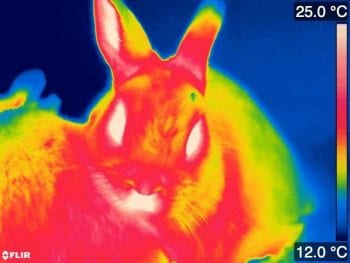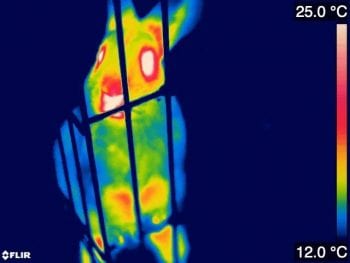9 Apr 2020
RVC study finds single housing increases stress-related behaviour and decreases body temperature, highlighting how owners should avoid having lone rabbits.

A study by the RVC has found housing rabbits together reduces stress-related behaviour and helps them keep warm in winter.

The study, which sought to compare the welfare of single versus paired rabbits, was conducted during winter at a rabbit-only rescue centre, and included 45 rabbits, comprising 15 housed singly and 15 pairs.
In the wild, rabbits are social, but they are also territorial, so author Charlotte Burn predicted singletons would show more stress-related behaviour, and reduced body temperature, but that pairs may be aggressive towards each other.
The results from the study indicate that social housing prevents rabbits biting at the bars of their housing, helps them keep warm, and may help buffer stress. Behavioural observations revealed bar-biting in 8 of the 15 single rabbits compared with none of the 30 paired rabbits. Bar-biting has previously been linked with frustration and attempts to escape.
Pairs interacted socially almost one third of the time, such as huddling together, grooming or nuzzling each other. Interestingly, aggression between pairs was never observed during the study. Most of the pairs comprised a neutered female and neutered male, which may be the most harmonious partnership for pet rabbits.
Dr Burn, associate professor in Animal Welfare and Behaviour Science at the RVC, said: “It was really sad to discover that lone rabbits were so much colder than the paired ones, and that more than half of them were seen biting at the bars of their enclosures.

“It’s crucial that we take rabbits’ needs for a companion seriously. There is a culture of getting ‘a rabbit’ and this needs to change, meaning that pet shops, vets and animal welfare charities should advise owners on housing rabbits with a compatible partner. Part of the enjoyment of having rabbits is surely to see them playing and resting together, especially when we give them suitably large housing.”
The article is in May’s issue of Animal Welfare, and is available online.